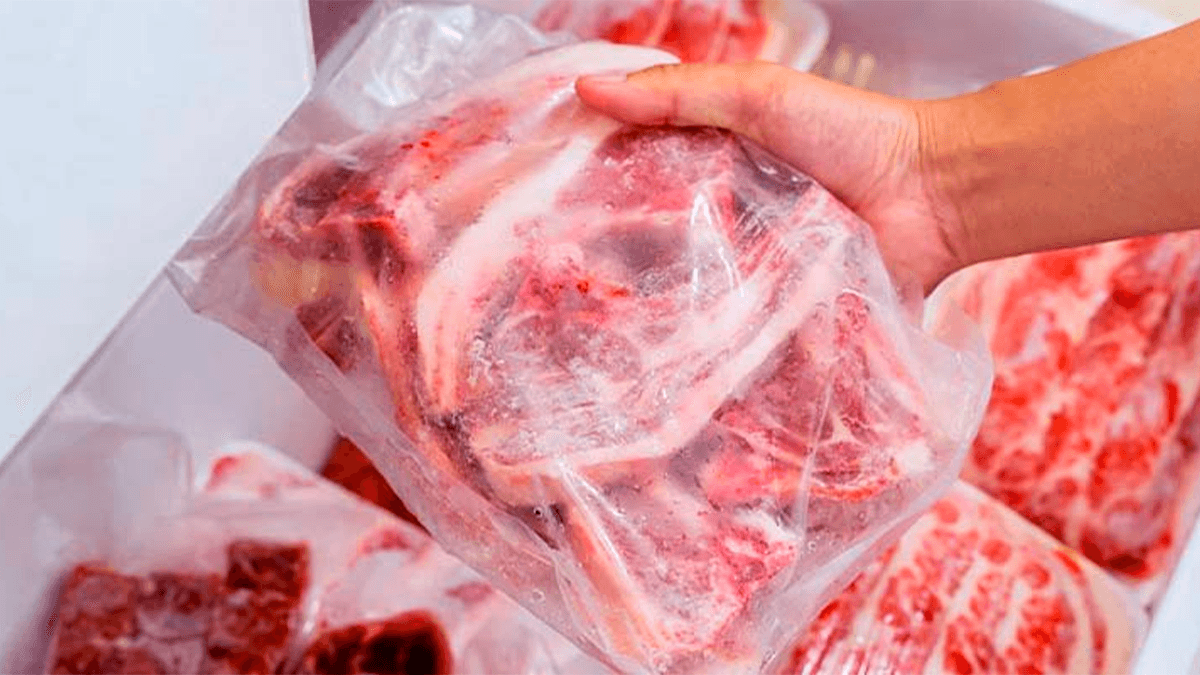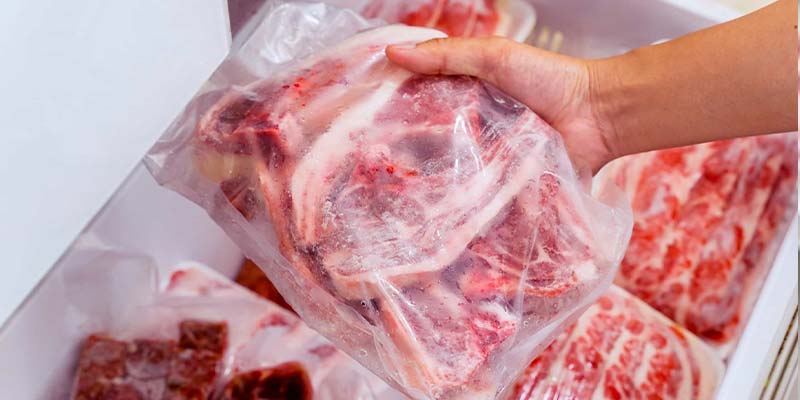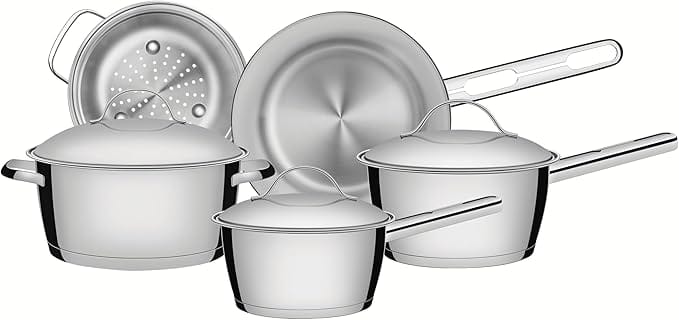All About Meat Frozen for 2 Years: Myths and Truths

Freezing food is a common practice to preserve quality and extend the shelf life of ingredients, and meat is no different. However, many questions arise about how long meat can be frozen without losing its properties and food safety. One of the most frequent questions is: is meat frozen for 2 years still safe to eat? In this article, we will demystify this subject, exploring myths and truths about meat frozen for long periods, with important tips and information for you to store your food correctly.
Freezing: An Ally in Food Preservation
Freezing is an effective method to preserve food because it reduces the activity of microorganisms and enzymes that cause food spoilage. When meat is frozen, the water in its cells turns into ice crystals, preventing bacterial growth and slowing enzyme action. However, the quality of frozen meat can be affected by storage time and freezing conditions.

Check out this image of meat being frozen!
What Happens to Meat Frozen for a Long Time?
Over time, even when frozen, meat can undergo some changes in quality. Ice crystals may break the meat’s cells, causing it to lose moisture and become drier and less flavorful when thawed. Additionally, the fat in the meat can become rancid, especially if the packaging is inadequate.
Myths and Truths About Meat Frozen for 2 Years
Next, we will clarify some myths and truths about meat frozen for a long period, such as 2 years:
- Myth: Meat frozen for 2 years is completely safe to eat.
- Truth: In general, meat frozen for 2 years is safe to eat, provided it was properly frozen in suitable packaging and kept at the ideal freezer temperature (-18°C or below). However, quality and flavor may be affected.
- Myth: Meat frozen for 2 years will have the same taste and texture as fresh meat.
- Truth: Meat frozen for a long period may lose some of its flavor and become drier due to moisture loss during thawing.
- Myth: Freezing meat for 2 years kills all bacteria.
- Truth: Freezing does not kill all bacteria. It only slows down or stops their growth. Bacteria can multiply again when meat is thawed, so it is important to cook meat properly.
- Myth: Any packaging is suitable for freezing meat.
- Truth: For proper freezing, use appropriate packaging such as freezer-specific plastic bags, airtight containers, or aluminum foil. Inadequate packaging can cause freezer burn and increase the chance of meat quality loss.
How to Freeze Meat Correctly?
To ensure the safety and quality of frozen meat, follow these tips:
- Choose fresh, good quality meat: Freezing does not improve meat quality, so always choose fresh meat from a reliable source.
- Pack properly: Use suitable packaging for freezing, removing as much air as possible. If possible, use vacuum packaging.
- Label the packages: Label packages with the freezing date and type of meat.
- Freeze quickly: Freeze the meat as quickly as possible to avoid the formation of large ice crystals.
- Maintain proper temperature: Keep the freezer at the ideal temperature (-18°C or below) to ensure meat preservation.
Ideal Freezing Time for Different Types of Meat
The ideal freezing time varies depending on the type of meat. Here is a table with some recommendations:
- Beef: 8 to 12 months
- Pork: 6 to 8 months
- Poultry: 6 to 12 months
- Fish: 3 to 6 months
- Ground meat: 3 to 4 months
- Sausages: 1 to 2 months
How to Thaw Meat Safely?
Improper thawing can increase the risk of bacterial contamination. Follow these tips to thaw meat safely:
- In the refrigerator: Thaw the meat in the refrigerator on the bottom shelf for 24 to 48 hours.
- In the microwave: Use the microwave defrost function and cook the meat immediately after thawing.
- Cold water immersion: Place the meat in a tightly sealed plastic bag and immerse it in cold water, changing the water every 30 minutes.
- Do not thaw at room temperature: Never thaw meat at room temperature, as this promotes bacterial growth.
Signs That Frozen Meat Is Not Good for Consumption
Even when frozen, meat can show signs of spoilage. Watch out for these signs:
- Bad or unpleasant odor: If the meat smells strong or strange, discard it.
- Abnormal color: If the meat appears very dark or greenish, discard it.
- Slimy texture: If the meat has a sticky or slimy texture, discard it.
- Damaged packaging: If the packaging is torn, with ice or showing signs of repeated thawing and freezing, discard the meat.
Extra Tips for Food Preservation
Besides freezing, there are other ways to preserve food. Check out some tips:
- Refrigeration: Keep food refrigerated at proper temperature (between 0°C and 5°C).
- Dehydration: Use dehydration to preserve fruits, vegetables, and herbs.
- Preserves: Prepare preserves with oil, vinegar, or brine to extend shelf life.
- Salting: Use salt to preserve meats and fish.
Freezing is an excellent tool to preserve your food, but it is essential to follow correct practices to ensure food safety and quality. Remember that meat frozen for long periods may have its quality affected but can still be safely consumed if the correct tips and guidelines are followed. With this complete guide, you have all the information to freeze, store, and thaw your meat properly.
Now that you know everything about meat frozen for 2 years, share this guide with your friends and family. This way, everyone can store food safely and make the most of their ingredients. And don’t forget to leave your comment here sharing your experiences with freezing food!
Enjoy every moment in your kitchen, explore new possibilities, and keep seeking information on how to best preserve your food. And remember, food safety is fundamental for the health of your entire family. Bon appétit!

Garante distribuição uniforme do calor, evitando que a cocada queime.
Image Source: castellmaq







